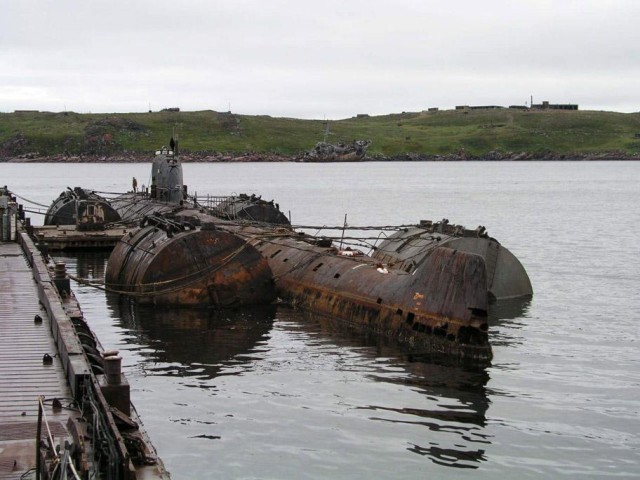
New Managing Director for Bellona Norway
The Board of the Bellona Foundation has appointed former Minister of Climate and the Environment Sveinung Rotevatn as Managing Director of Bellona No...
News
Publish date: February 6, 2003
News
When spent nuclear fuel is taken out of the reactor, one tonne of the nuclear fuel contains 950kg-980kg of 238U, 5.5kg-9.6kg of plutonium and smaller quantities of alpha-emitting isotopes (neptunium, americium, curium and other transuranium radionuclides). The radioactivity reaches 26,000 Ci/kg in the spent nuclear fuel. According to our data, the average measurement of radioactivity for spent naval nuclear fuel stored at the bases of the Northern Fleet is around 750 Ci/kg.
By the end of 2000, fuel from 118 reactor cores were being stored at onshore bases and nuclear service ships of the Northern Fleet, and a further 130 reactor cores still remained in the retired submarines. A total of 248 reactor cores are stored at the Northern Fleet, corresponding to 99 tons of spent nuclear fuel with radioactivity of 74.5 million Ci. Official estimates claim that the Chernobyl accident fallout had a total radioactivity equal to 50 million Ci.
According to the practice of the 1960s and 1970s for the closed fuel cycle, spent nuclear fuel unloaded from the reactor cores used to be preliminarily stored at pool-type storage facilities for 5 to 10 years. After that it was loaded into special transport casks and shipped by train to the Mayak reprocessing plant, RT-1.
The Northern Fleet used to have two pool storage facilities for spent nuclear fuel, situated at Andreeva Bay and in Gremikha. After these two facilities were taken out of operation, spent nuclear fuel was stored in dry storage facilities and containers in Andreeva Bay, Gremikha, onboard the nuclear support ships and in the reactors of the retired submarines. Six reactor cores unloaded from the liquid metal cooled reactors are stored in Gremikha and cannot be reprocessed.

The Board of the Bellona Foundation has appointed former Minister of Climate and the Environment Sveinung Rotevatn as Managing Director of Bellona No...

Økokrim, Norway’s authority for investigating and prosecuting economic and environmental crime, has imposed a record fine on Equinor following a comp...

Our op-ed originally appeared in The Moscow Times. For more than three decades, Russia has been burdened with the remains of the Soviet ...

The United Nation’s COP30 global climate negotiations in Belém, Brazil ended this weekend with a watered-down resolution that failed to halt deforest...